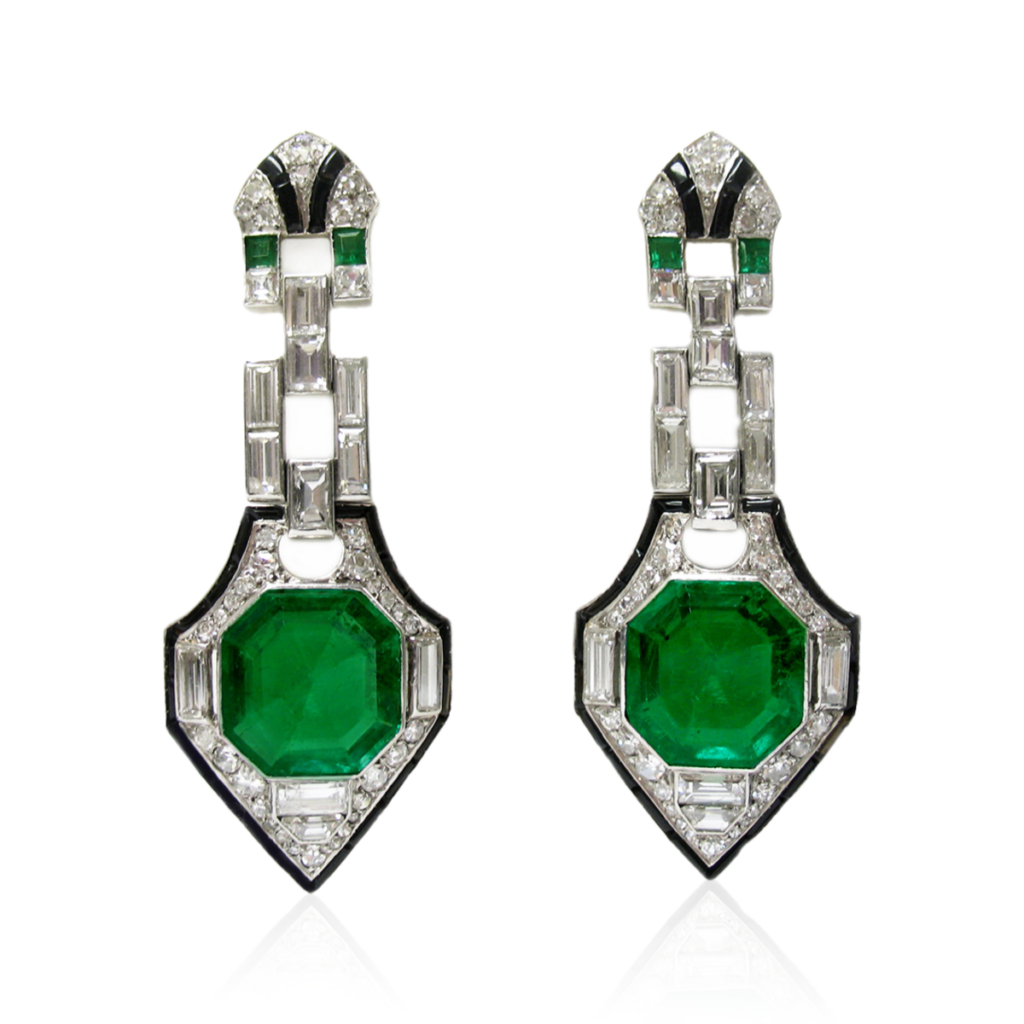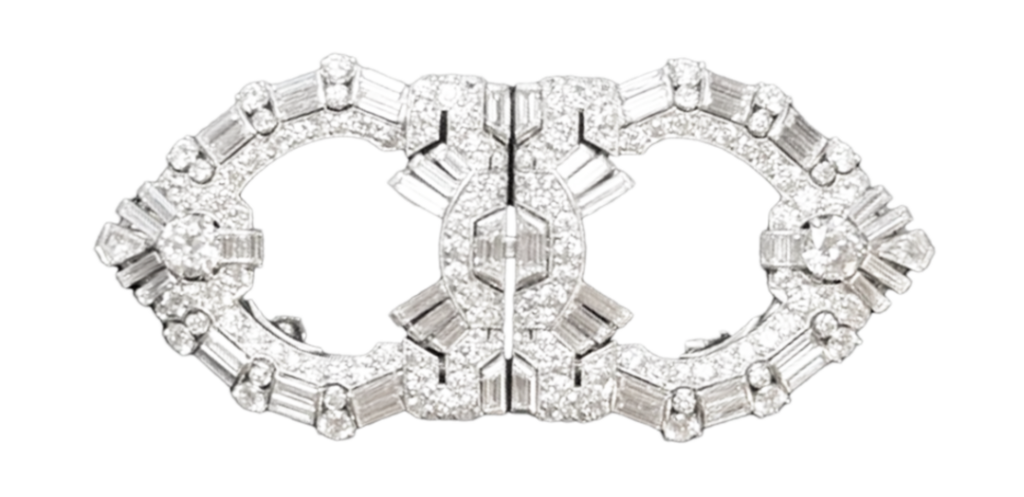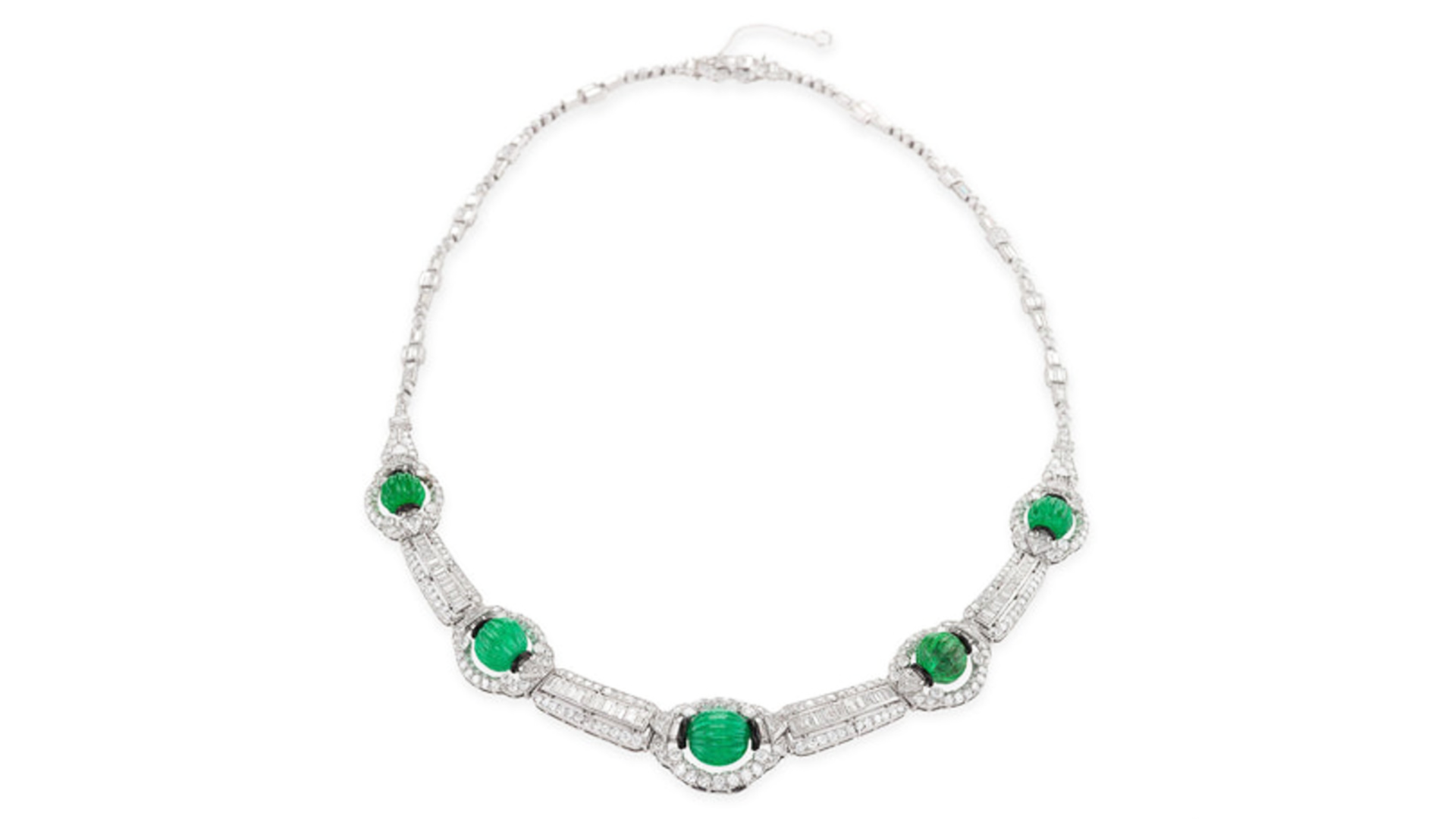
When we talk about Art Deco jewelry, we are referencing jewelry that was made between 1920 and 1940. The design movement covers roughly a twenty year period, but the groundwork for this artistic movement actually started before 1920. Art Deco was about more than jewelry, it was an overall aesthetic that permeated architecture, furniture, decorative accessories and more. Art Deco was a movement of modernism, its geometric straight lines were a rebellion against the swirling, curling formal garland style of jewelry of the first decade of the 20th century.
The Bauhaus Influence

A major influence in the aesthetics of the early twentieth century was the Bauhaus (1919-1933) art school in Germany, which encouraged the exploration of minimalism and pared-back simplicity in all of the decorative arts. The focus was on abstract shapes, geometric forms and function with no frills or embellishment. The school closed in 1933 when the faculty voted to shut down rather than cooperate with the Nazis who viewed the establishment as a breeding ground for communist ideology. Closing the school did not end the movement, some of the teachers moved to the United States, continuing to influence art and design.
Art Deco style jewelry from the 1920s was filled with references to foreign cultures. The Ballet Russes was one of the influences. The ballet came to Paris in 1909, showcasing extravagant sets with dramatic color schemes that had a distinctive Asian flair, piquing the interest of the public and sparking a taste for Japanese and Chinese motifs in jewelry and other decorative arts. In 1922, the tomb of King Tutankhamen was discovered, leading to an interest in anything Egyptian, especially scarabs, pyramids and lotus flowers. Jazz music and African art were also important influences as was Cubism. What ended up happening was a convergence of simple, linear shapes with dramatic color combinations and exotic motifs that created a strikingly bold, modern style.
The Fashion Connection

Fashion was a game changer for jewelry in the 1920s. Women had taken on men’s jobs during World War I and they had shortened their hems and hair in order to move more freely. Corsets became a thing of the past and knee length tubular dresses, with a dropped waistline, or no waistline, were the new chic. And with these fresh fashions came a novel style of jewelry that was sleek and sophisticated, geometric and symmetrical. The jewelry reflected the overall design aesthetic of the time.
Long was the name of the game for jewelry in the 1920s. Short hair made long earrings fashionable, dropped waists were the perfect showcase for long sautoirs and ropes of pearls, sometimes worn down the back of a low cut gown. Bracelets were flat and narrow with a repeating pattern and were often long as they were worn in multiples and stacked to adorn arms left bare by sleeveless dresses. Brooches were also stylish and the dress clip was introduced sometime in the 1920s and was worn on cloche hats, coats, collars, handbags, belts and even shoes. The bandeau was a popular hair ornament that was worn low on the forehead, often embellished with a feather, the style was very flattering with short hair, it was also a little less formal and more playful than a tiara. Cocktail rings were introduced in the 1920s and became one of the decade’s most chic jewels; it’s a style that continues to be popular today.
The Great Depression

Everything changed when the stock market crashed in 1929 leading to the Great Depression, which had negative economic ramifications around the world. However, there were still many people who had money and who desired jewelry. By the 1930s movies were a major source of entertainment for people looking for an inexpensive escape from the dreary days of the depression. The biggest movie stars of the decade were dripping in jewels in their films, creating desire for jewelry. When the 1930s rolled around, fashion changed again. Dropped waists returned to the natural waistline, hemlines headed south and fluid satin fabrics were popular for nighttime as glamour remained a style staple of the decade.
Focusing on the Face
As clothing styles changed so did the jewelry. While 1920s jewelry tended to be long, 1930s jewelry was much shorter putting the focus on the face. Earrings rolled into scrolls, shells, or flowers that hugged the face, necklaces were closer to the throat, again bringing attention to the face. Bracelets became wider, with large plaques and were made to fit the wrist more tightly. It was Hollywood’s influence that made bracelets tighter on the wrist. Film makers didn’t want the jingle-jangle sounds of bracelets clinking together to distract from the movie, so they asked for tighter fitting bracelets which turned into a trend.
Jewelry during the day in the 1930s was simple and understated, perhaps a bracelet, a brooch and a small ring. But when the sun set, the large gems, ornate designs, oversized cocktail rings, big earrings and dress clips were en vogue for wealthy fashionistas. Dress clips — either single or doubles that could be worn as one brooch — were the must-have accessory for stylish women, the versatile clip was worn everywhere from the neckline of a gown to a hat, handbag, belt, or even shoes. It was also notable that during the 1930s, some jewelry became less flat with a rounded or slightly domed shape.
Changing Times
The glamour and opulence of Art Deco jewelry came to an end with the start of World War II. Many jewelry artisans served in the war and when they returned to their workshops in the 1940s, the natural inclination was to pick up and continue styles that they had been making prior to the war. However, times had changed and a new look was taking over as the world headed into a post war boom and a new style of jewelry.
Top of Page: Old European diamonds (approximately 11.10-carats), carved emerald beads (approximately 19-carats), enamel and platinum necklace, circa 1930 courtesy Macklowe Gallery (@macklowegallery).
Authored by Amber Michelle


